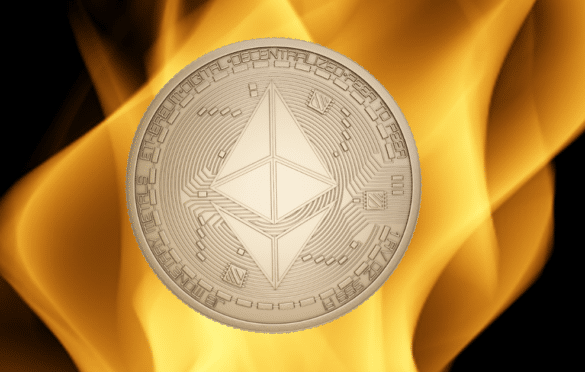Ethereum’s burn mechanism is stronger than ever, with the crypto’s second-largest network officially destroying almost 2 million ETH since its implementation last August.
Since its creation, the network has burned a total of 2,000,996 Ethereum, according to Watch the Burn, a dashboard that monitors the burn process. That equals more than $5.82 billion removed from circulation for good in monetary terms.
The London hard fork, EIP – 1559. This is its technical name and one of the several updates the network went through. This update improved the network’s fee structure. The fees originally would pay to perform operations on the Ethereum network about miners. The EIP – 1559 merely broke these fees into two parts – the base and tip.
Burning the base essentially removes it from circulation. The burning mechanism brought with it the “ultra-sound meme.” When there is a rise in Ethereum activity, the destruction of the circulating supply may exceed the amount provided via block rewards. In response, this creates a deflationary effect. The deflationary effect is when there is less Ethereum on the network to buy. This is as a result of all the Ethereum burned.
Consensus Layer:
Going hand in hand with the London Hard fork, Ethereum is getting closer to yet another update. The consensus layer, Ethereum 2.0 improves the speed of transactions, provides lower rates, and according to Lubin, the Ethereum co-founder. It “will lay to rest Ethereum’s carbon or energy footprint problem.”
The update transitions Ethereum from a proof-of-work (PoW) consensus process, which Bitcoin also employs to confirm transactions, to a new model known as proof-of-stake (PoS). The latter technique is better for the environment. It requires less computational resources to achieve equivalent levels of security.
It doesn’t end here. Lubin goes on, “Another exciting thing about moving to proof of stake is that proof of work requires a lot of issuances of ether [ the term used to describe Ethereum the cryptocurrency rather than the network] in order to incentivize these people with heavy infrastructure, to lend their resources and validate transactions on the network.” “So, if you have the very light infrastructure, then you can issue much less ether per block that’s constructed.”
The term less issuance Lubin uses refers to the reality that there will be less Ethereum available to the market. This means that Ethereum will “be burning more ether every single day than is issued, because much less ether will be issued to secure the network, and so ultra sound money is about to come into existence,” says Lubin.
For more news updates, visit our homepage now and see our latest news article. Want to learn more about trading? Visit our education page now and learn for FREE!

